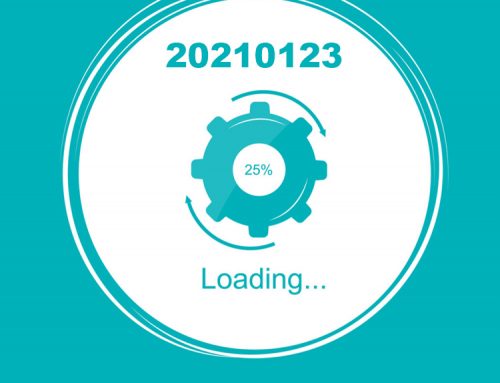I’m sure you’ve heard of h. 265 and h. 264, and you’ve seen the technical terms.4K video encoding in the format h. 265 will be supported on all TVS, and h. 265 will be supported on video monitoring system.But in the case of unused, it’s hard to really know the difference, and today we’re going to take a moment to understand the difference.
H.264 is the compression video coding standard proposed by video coding expert group.
H.264 standards include: access unit segmentation, additional enhancement information, basic image coding, redundant image coding, real-time decoding refresh, imaginary reference decoding, and imaginary code flow scheduler.
Technical terms can be a mouthful, right?In fact, we do not need to understand the specific video coding process and compression format standards.Just know that h.264 is the next generation digital video compression format after MPEG4.

H.265 standard is based on H.264 improve some techniques, can play the same quality video with half the bandwidth. It’s clear that computers, phones, tablets, TVS, including our monitoring industry, can all save more bandwidth and capacity with the same video quality when h. 265 is used.
With the improvement of network technology and the processing capacity of camera chip, the security monitoring hd video 720P, 1080P has gradually become popular. 4K hd video is beginning to appear in the monitoring area, but we cannot meet the requirements based on the previous mpeg-2, mpeg-4, h. 264/AVC. Thus h. 265 came into being, and the compression efficiency was doubled.

The other day I was talking to a friend who works on a surveillance project, about the h. 265 HDD video recorder now in use, same number of days that video storage requirements, you can save half of the capacity. For example, I used to use 8T hard disk, but now I can use 4T hard disk. I joke that I installed 8T hard disk at the beginning, and I can even take one back, and I can guarantee the same storage days.
Let’s take a look at the difference between video storage in h. 264 and h. 265. For example, we usually use 200W webcams, and the bitstream is 4MB/S, which is 4096kbps. Knowing the bitstream, time and channel number, we can directly calculate the capacity of one day.
Formula :1DAY=Code stream×3600×24÷8÷1024÷1024
Note: because the code stream unit is seconds, so we want to convert hours into 3600 seconds to calculate, 24 hours a day, 8 is the byte, we formula to ÷8 here, is to calculate to MB, ÷1024, convert to G, ÷1024, convert to T.The storage capacity for a day is calculated, and the number of days the customer needs to keep it is multiplied by the number of days.
Comparison table of bitrate between h. 265 and h. 264 at various resolutions

So h. 265 storage is the compression of the code stream, the calculation of the storage space on the basis of h. 264 divided by 2, is the capacity of a day, should be 40%-60%, estimated by 2 no problem.200W pixel per day 20G;300W pixel a day 30G;400W per pixel, 40G per day.

How does the device that supports h. 265 work? Is the storage space halved by connecting the previous webcams directly to the h. 265 video recorder? It says no.The camera and NVR must support h. 265 technology at the same time. You can see whether h. 265 is supported in the device parameter description.If the camera and NVR are supported by one party, but not the other party, then it is compatible with the downward direction like other devices, which means normal use. All other functions can be realized, except the storage can’t be halved.






Piece of writing writing is also a fun, if you be familiar with after that you can write if not it is complex to write. Lilly Berkie Ahab
In the study…
Thank you for sharing with us, I think this website genuinely stands out : D. Storm Whittaker Liza
thank you
I consider something genuinely special in this internet site. Marleen Devy Celin
Good article. I absolutely appreciate this site. Keep it up! Lucille Ad Richie
I simply could not depart your website before suggesting that I really loved the usual info an individual provide on your visitors? Darya Sasha Recha
A motivating discussion is worth comment. I think that you ought to write more
about this issue, it may not be a taboo subject but generally people do not discuss such issues.
To the next! Kind regards!!
Okay
Awesome blog! Do you have any hints for aspiring writers?
I’m hoping to start my own website soon but I’m a little lost on everything.
Would you suggest starting with a free platform like WordPress or go for a paid option?
There are so many options out there that I’m totally overwhelmed ..
Any ideas? Appreciate it!
Hi there! I could have sworn I’ve been to this website before but after checking through some
of the post I realized it’s new to me. Nonetheless, I’m definitely glad
I found it and I’ll be bookmarking and checking back often!
I could not refrain from commenting. Perfectly written!
Congratulations to the editorial staff. The article you have prepared is quite beautiful. I got a lot of good information.
First of all, thank you for writing such an article. every word is full of knowledge
Thank you for every other informative blog.
Thank you for every other informative blog.
I believe this is among the such a lot vital information for me. And i’m satisfied reading your article. However wanna statement on few basic issues, The site taste is great, the articles is actually excellent : D. Good activity, cheers|
I am genuinely delighted to read this website posts which includes plenty of valuable data, thanks
for providing these statistics.
wellcome.
Perfectly composed subject matter, Really enjoyed studying.
Do you mind if I quote a couple of your articles as long as I
You can quote from this article.
I was just searching for this information for some time. After six hours of continuous Googleing, at last I got it in your web site. I wonder what is the lack of Google strategy that don’t rank this kind of informative sites in top of the list. Normally the top sites are full of garbage.
I really enjoyed reading your post, especially because it addressed my issue. It helped me a lot and I hope it can help others too.
Please tell me more about your excellent articles
Dude these articles were really helpful to me. Thanks a lot.
You’ve been really helpful to me. Thank you!
very good content
Hi, just wanted to mention, I enjoyed this blog post.
It was practical. Keep on posting!
thanks